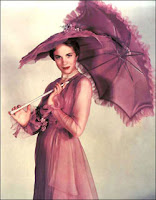 Not long ago, I heard the good news that Laura Kinsale has completed a new book.
Not long ago, I heard the good news that Laura Kinsale has completed a new book.
For anyone who doesn’t already know, Laura Kinsale writes superb historical romances, many of them featuring amazingly tortured heroes. In fact, no one does dark heroes better, as the judges of this year’s Romance Writers of America RITA contest recognized in selecting her last release, SHADOWHEART, as Best Historical Romance. My critique partners and I sometimes refer to her as the Goddess. When we analyze her scenes, as a writing exercise, we usually find ourselves genuflecting and mumbling, “We are not worthy, we are not worthy…”
OK, I could rhapsodize for a while longer, but you get the picture.
I read on her website (www.laurakinsale.com/books/lucky.html) that Laura decided to do a lighter story after all the angst and turmoil in SHADOWHEART. It’s going to be more like her other lighter book, MIDSUMMER MOON.
As presumptuous, not to say blasphemous, as it is to say this, I think I understand. Some of my earlier Regencies were on the light side, but LADY DEARING’S MASQUERADE has darker elements than I’ve tackled before (still Little League compared to SHADOWHEART, of course). I found myself suffering along with my characters, which can be a draining experience. When I started another angsty story it was like wading through an ever-deepening snowdrift. Now I’m doing a lighter one and finding that the ideas are coming a little more quickly (though first drafts are never easy). So for me, changing up was a creative necessity.
However, switching gears feels like yet another creative risk.
I think Laura Kinsale’s devoted fans will buy her next book. I certainly will. But do some readers feel cheated when an author of an angsty (or funny, or sweet, or sexy… you name it) book does something radically different in her next?
I wonder.
Elena
www.elenagreene.com








